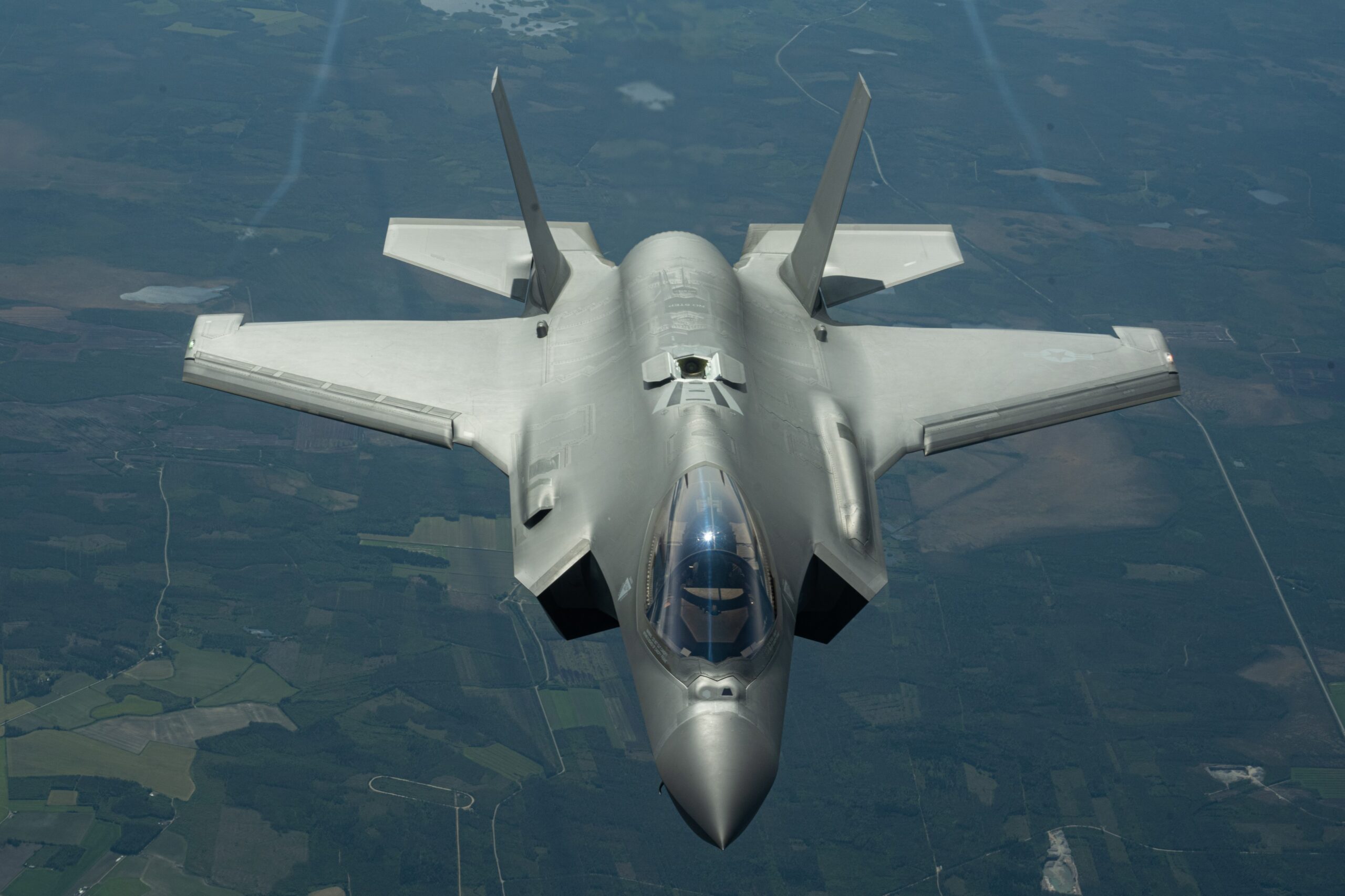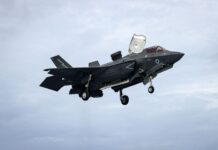
UK officially announces intention to purchase F-35As to contribute to NATO nuclear mission
Peter Felstead
The United Kingdom is to procure 12 F-35A conventional take-off and landing (CTOL) Joint Strike Fighters, as opposed to more F-35B short take-off/vertical landing (STOVL) variants, to contribute to NATO’s Dual-Capable Aircraft (DCA) nuclear mission, the UK Ministry of Defence (MoD) announced on 24 June 2025.
The UK MoD had signalled this intention in its latest Strategic Defence Review, published on 2 June 2025, which mentioned the possibility of buying F-35As and recommended that the UK commence “discussions with the United States and NATO on the potential benefits and feasibility of enhanced UK participation in NATO’s nuclear mission”. After the MoD announced that it would proceed with an F-35A buy on 24 June, UK Prime Minister Sir Keir Starmer made an official announcement on 25 June, on the first day of the NATO Summit in The Hague, that the UK would buy at least a dozen F-35As.
The UK MoD placed its first F-35B order with Lockheed Martin in November 2014 and has so far ordered 48 F-35Bs, the first of which arrived at RAF Marham in 2018. A land initial operating capability (IOC) with the type was declared that same year, with maritime IOC declared in 2020. As of March 2025 37 F-35Bs had been received. The UK’s F-35 programme of record currently stands at a total of 138 F-35s.
However, due to the fact that the F-35B features a lift fan for its STOVL operations, the aircraft’s bomb bay is smaller than that of the F-35A and C variants, meaning that it cannot carry the US-produced B61-12 freefall nuclear bomb. The F-35B also has a smaller range than the F-35A (1,700 km as opposed to 2,200 km).
NATO’s DCA nuclear mission is currently supported by the air forces of Belgium, Germany, Italy and the Netherlands. The UK’s Royal Air Force (RAF), meanwhile, has not been armed with a nuclear capability since the WE.177 freefall nuclear bomb was withdrawn from service in 1998.
The UK MoD stated that the F-35As, which will be collocated with the UK’s F-35Bs at RAF Marham, will be up to 25% cheaper to procure than F-35Bs.
In a press release issued by on 25 June the RAF stated, “As part of the second phase procurement plans of 27 aircraft, we will purchase a combination of 12 F-35A and 15 F-35B variants, with options on further purchases examined in the Defence Investment Plan.”
The RAF additionally noted, “Day-to-day, the F-35As will be used in a training role on 207 Squadron: the Operational Conversion Unit (OCU). As the F-35A carries more fuel than the F-35B variant, it can stay airborne for longer, extending the available training time in each sortie for student pilots. As F-35As also require fewer maintenance hours, there will be increased aircraft availability on the OCU. These factors combined will improve pilot training and reduce the amount of time for pilots to reach the front-line squadrons.”
One complication regarding the UK’s F-35A procurement is that, unlike the F-35Bs operated by the US Marine Corps, RAF/RN and Italian Air Force, the F-35A is typically refuelled using a flying boom rather than the probe-and-drogue method used by the F-35B. Thus, if the UK’s future F-35As are to be refuellable by the RAF’s Voyager air tanker/transports, the Voyagers would need to be modified with the addition of boom refuelling systems.
In announcing the upcoming F-35A procurement the UK MoD stated that the purchase “represents the biggest strengthening of the UK’s nuclear posture in a generation”, given that, since the retirement of the WE.177, the UK has relied solely on the nuclear-powered ballistic missile submarines (SSBNs) of the RN’s Continuous At-Sea deterrent.
The MoD quoted Prime Minister Sir Keir Starmer as stating, “The UK’s commitment to NATO is unquestionable, as is the Alliance’s contribution to keeping the UK safe and secure, but we must all step up to protect the Euro-Atlantic area for generations to come.”
NATO Secretary General Mark Rutte was quoted by the MoD as saying, “The UK has declared its nuclear deterrent to NATO for many decades, and I strongly welcome today’s announcement that the UK will now also join NATO’s nuclear mission and procure the F-35A. This is yet another robust British contribution to NATO.”















